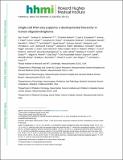| dc.contributor.author | Tirosh, Itay | |
| dc.contributor.author | Venteicher, Andrew S. | |
| dc.contributor.author | Hebert, Christine | |
| dc.contributor.author | Escalante, Leah E. | |
| dc.contributor.author | Patel, Anoop P. | |
| dc.contributor.author | Yizhak, Keren | |
| dc.contributor.author | Fisher, Jonathan M. | |
| dc.contributor.author | Rodman, Christopher | |
| dc.contributor.author | Mount, Christopher | |
| dc.contributor.author | Filbin, Mariella G. | |
| dc.contributor.author | Neftel, Cyril | |
| dc.contributor.author | Desai, Niyati | |
| dc.contributor.author | Nyman, Jackson | |
| dc.contributor.author | Izar, Benjamin | |
| dc.contributor.author | Luo, Christina C. | |
| dc.contributor.author | Francis, Joshua M. | |
| dc.contributor.author | Patel, Aanand A. | |
| dc.contributor.author | Onozato, Maristela L. | |
| dc.contributor.author | Riggi, Nicolo | |
| dc.contributor.author | Livak, Kenneth J. | |
| dc.contributor.author | Gennert, Dave | |
| dc.contributor.author | Satija, Rahul | |
| dc.contributor.author | Nahed, Brian V. | |
| dc.contributor.author | Curry, William T. | |
| dc.contributor.author | Martuza, Robert L. | |
| dc.contributor.author | Mylvaganam, Ravindra | |
| dc.contributor.author | Iafrate, A. John | |
| dc.contributor.author | Frosch, Matthew P. | |
| dc.contributor.author | Rivera, Miguel N. | |
| dc.contributor.author | Getz, Gad | |
| dc.contributor.author | Rozenblatt-Rosen, Orit | |
| dc.contributor.author | Cahill, Daniel P. | |
| dc.contributor.author | Monje, Michelle | |
| dc.contributor.author | Bernstein, Bradley E. | |
| dc.contributor.author | Louis, David N. | |
| dc.contributor.author | Suvà, Mario L. | |
| dc.contributor.author | Golub, Todd | |
| dc.contributor.author | Regev, Aviv | |
| dc.date.accessioned | 2018-07-03T14:38:08Z | |
| dc.date.available | 2018-07-03T14:38:08Z | |
| dc.date.issued | 2016-11 | |
| dc.date.submitted | 2016-05 | |
| dc.identifier.issn | 0028-0836 | |
| dc.identifier.issn | 1476-4687 | |
| dc.identifier.uri | http://hdl.handle.net/1721.1/116752 | |
| dc.description.abstract | Although human tumours are shaped by the genetic evolution of cancer cells, evidence also suggests that they display hierarchies related to developmental pathways and epigenetic programs in which cancer stem cells (CSCs) can drive tumour growth and give rise to differentiated progeny. Yet, unbiased evidence for CSCs in solid human malignancies remains elusive. Here we profile 4,347 single cells from six IDH1 or IDH2 mutant human oligodendrogliomas by RNA sequencing (RNA-seq) and reconstruct their developmental programs from genome-wide expression signatures. We infer that most cancer cells are differentiated along two specialized glial programs, whereas a rare subpopulation of cells is undifferentiated and associated with a neural stem cell expression program. Cells with expression signatures for proliferation are highly enriched in this rare subpopulation, consistent with a model in which CSCs are primarily responsible for fuelling the growth of oligodendroglioma in humans. Analysis of copy number variation (CNV) shows that distinct CNV sub-clones within tumours display similar cellular hierarchies, suggesting that the architecture of oligodendroglioma is primarily dictated by developmental programs. Subclonal point mutation analysis supports a similar model, although a full phylogenetic tree would be required to definitively determine the effect of genetic evolution on the inferred hierarchies. Our single-cell analyses provide insight into the cellular architecture of oligodendrogliomas at single-cell resolution and support the cancer stem cell model, with substantial implications for disease management. | en_US |
| dc.publisher | Nature Publishing Group | en_US |
| dc.relation.isversionof | http://dx.doi.org/10.1038/NATURE20123 | en_US |
| dc.rights | Creative Commons Attribution-Noncommercial-Share Alike | en_US |
| dc.rights.uri | http://creativecommons.org/licenses/by-nc-sa/4.0/ | en_US |
| dc.source | PMC | en_US |
| dc.title | Single-cell RNA-seq supports a developmental hierarchy in human oligodendroglioma | en_US |
| dc.type | Article | en_US |
| dc.identifier.citation | Tirosh, Itay et al. “Single-Cell RNA-Seq Supports a Developmental Hierarchy in Human Oligodendroglioma.” Nature 539, 7628 (November 2016): 309–313 © 2016 Macmillan Publishers Limited, part of Springer Nature | en_US |
| dc.contributor.department | Massachusetts Institute of Technology. Department of Biology | en_US |
| dc.contributor.department | Koch Institute for Integrative Cancer Research at MIT | en_US |
| dc.contributor.mitauthor | Golub, Todd | |
| dc.contributor.mitauthor | Regev, Aviv | |
| dc.relation.journal | Nature | en_US |
| dc.eprint.version | Author's final manuscript | en_US |
| dc.type.uri | http://purl.org/eprint/type/JournalArticle | en_US |
| eprint.status | http://purl.org/eprint/status/PeerReviewed | en_US |
| dc.date.updated | 2018-07-03T13:02:04Z | |
| dspace.orderedauthors | Tirosh, Itay; Venteicher, Andrew S.; Hebert, Christine; Escalante, Leah E.; Patel, Anoop P.; Yizhak, Keren; Fisher, Jonathan M.; Rodman, Christopher; Mount, Christopher; Filbin, Mariella G.; Neftel, Cyril; Desai, Niyati; Nyman, Jackson; Izar, Benjamin; Luo, Christina C.; Francis, Joshua M.; Patel, Aanand A.; Onozato, Maristela L.; Riggi, Nicolo; Livak, Kenneth J.; Gennert, Dave; Satija, Rahul; Nahed, Brian V.; Curry, William T.; Martuza, Robert L.; Mylvaganam, Ravindra; Iafrate, A. John; Frosch, Matthew P.; Golub, Todd R.; Rivera, Miguel N.; Getz, Gad; Rozenblatt-Rosen, Orit; Cahill, Daniel P.; Monje, Michelle; Bernstein, Bradley E.; Louis, David N.; Regev, Aviv; Suvà, Mario L. | en_US |
| dspace.embargo.terms | N | en_US |
| dc.identifier.orcid | https://orcid.org/0000-0001-8567-2049 | |
| mit.license | OPEN_ACCESS_POLICY | en_US |
